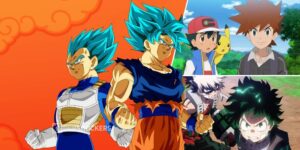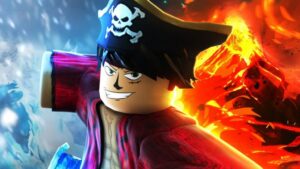You arrive at Liyue Harbor, located on an idyllic shore guarded by towering rocks. The tall and imposing architecture will quickly seize your attention, while merchants line the streets selling their wares. Approach them and they’ll quickly start prattling about the goods, assuring you that they’re not stolen. You’re arriving at the time of a solemn occasion, the Rite of Descension, during which a deity is supposed to emerge to counsel the town. Instead, this mighty being descends into death. Now, as an outlander, you’re suspected to be be responsible for this tragic development.
Everything is scenic; the music is charming and the premise is interesting, but then the game’s narrative quickly gets sluggish and loses all its allure. Seldom did it find perfect beats, in bits and pieces few and far between. That’s not just exclusive to Liyue’s arc, as Genshin Impact follows the same method of storytelling throughout. Even the latest arc is a product of the same approach, but it also boasts some unique qualities and crucial differences.
The Game’s Glut Of Dialogue Has Negatively Affected Its Pacing


Liyue was protected for thousands of years by the archon Rex Lapis, with the cushion from the Adepti. The nation stood the test of time, enduring countless conflicts, all under the shield of Rex Lapis. As the tides change and the “bedrock turns to dust,” will the people of Liyue be able to stand up for themselves? That’s the question the entire plot of Liyue’s story asks itself, and answers in rather lackluster fashion.
If I had to summarize Genshin Impact’s storytelling in one line, it would be: not a novel, but a manual. While the game is brimming with activities, they are only rarely utilized during the story. You’ll mostly find yourself having conversations with other characters. These conversations seem intended to pilot the entire arc. Unfortunately, they are quite heavily padded out and do not develop the plot until the very end. They are filled with long re-tellings of events, and leave little room for introspection.
In the Liyue story, you go shopping with Zhongli, later revealed to be the dead god’s vessel, who is preparing for his own funeral. Just after the interesting start, it completely unwinds and becomes more of a tour of Liyue. It focuses on the world and NPCs, who are static. Dragging for a couple of hours, filled with fetch quests, the mission will quickly lose your attention and leave you wanting to explore the world instead. This is what the game itself encourages by level-gating you, but the byproduct is a lack of interest in the narrative. Perilous Trail, as it develops, proves itself an exception to this issue.
The Game’s “Moments” Were All That Were Keeping It Afloat


Just as your patience with the narrative wears thin, the game does what it has always done best: It bombards you with lots of drama, ending with a pre-rendered cinematic that has you on edge. The most intriguing narrative beats will always be hidden in these pre-rendered cutscenes, as everything else, in most cases, remains a little monotonous. Sadly, it arrives so late, and the build-up often feels entirely unrelated to how the action ended.
This is perfect for a gacha game, in which the story is almost always an afterthought. Most people are only excited about getting a new area to explore or trying out the abilities of the latest rare character. The developers’ track record on these has been almost impeccable. For once, though, they have managed to pull off an all-round narrative hit that I can’t help continuously thinking about.
The latest quest, Perilous Trail, doesn’t change the familiar direction very much at all. What it does do is improve the formula, providing an impressive accumulation of everything the team has learnt from telling live stories in the game for almost two years. It boasts a good premise and engaging conversations, activities, and moments, all perfectly balanced.
One Misadventure That I’d Like To Go On Again
Paimon, our traveling companion, suddenly remembers something strange she noticed beneath the Chasm. The protagonist, always intrigued when the world is in danger but rarely remembering their lost sister, pays a visit. On our arrival, we found some familiar faces, namely Arataki Itto, her subordinate-and-not-the-leader-of-gang companion, Kuki Shinobu, and Yanfie. Oh, and there is also the mysterious girl that saved us before, Yelan.
From the outset, this arc immediately solved the problem of conversations. Having a diverse cast improves the conversational tone, as everyone brings their own dynamics to the table. Previously, the game has boasted only a few characters and regular world NPCs, who are most often static. Just having varied playable characters doesn’t solve the entire problem, though. It’s just one important element of everything that sets this arc apart.
Itto: Truly The One And Oni


Plenty of the game’s characters fall victim to the typical gacha character trait, where their appealing design alone seems intended to warrant a purchase. In addition, trouble always lurks all over Teyvat, so the world is filled with heroes and hard workers, making it hard to find someone who acts like a clown. Itto is one of the few who escapes the game’s adamant characterization (which has often yielded nothing more than more homogeneous personalities). Of course, Itto’s design is also meant to tempt you to pull for him, but his personality really does shine above most.
I mean, if you were ever trapped inside a cave, who would you rather be with? Someone serious, or funny? The game says both, which is likely the most prudent answer, and the Perilous Trail arc takes steps to prove this. The quest had our crew stuck inside a cavern, from which there is seemingly no return. Because we were struck with likable and diverse characters, though, even remaining trapped became interesting.
Genshin Impact has a huge cast, but only a handful of them stand out from a narrative perspective. The game doesn’t attempt to develop most of those and ends up being somewhat one-dimensional. This time, it not only develops them, it does so brilliantly.
Xiao’s Touching Tale Is A Breakthrough For Genshin Impact’s Storytelling
My first visit to Wangshu Inn saw me meet a mysterious lone wolf of a warrior. Though I found the gentleman very interesting, I didn’t know the weight of the burden he carried on his shoulders. The dark memories of countless souls he slayed for thousands of years, actions that torment what’s left of his soul. This warrior is Xiao, the only remaining Yaksha, and one of the most interesting personalities in Genshin Impact’s history.
When even Rex Lapis couldn’t quell the fallout of the death of the Gods, he summoned five Yakshas. There was nothing “human” about them, as their only purpose was to kill. Over time, they came to terms with themselves, accepting that human relationships were not for them and that they must forever dwell in their realms alone. Not only that, but after every evil is purged, they’ll succumb to karmic debt. That’ll either have them turn on each other or be consumed by their burden.
That’s all we were told heading into the quest. This event, however, shows the tenderness of the hardest rock, a deep, emotional, and engrossing tale. Xiao is here to find out about his only remaining friend, as the others had already met their fate. His name is Bosacius. The literal translation of his name in Chinese is “In the moment of fleeting life, all is let go,” indicating that the purpose of his life is self-sacrifice. It’s deep, mature and heart-wrenching territory, indicating just how far Genshin Impact’s storytelling has come.


Bosacius and Xiao sacrifice themselves some hundred years apart, in the same place, to protect the people around them. Their ideologies told them their only purpose is to save others.
Xiao, like other Yakshas, nearly met death until Zhongli saved him. This was the deity telling him, indirectly, that he doesn’t need to bear all the burden. There are people who care for us, and sharing our pain not only strengthens the relationship but also stops us from being driven into despair.
It is hard to change long-held values that have been carried over a lifetime. As the tides change, however, with love and care, you can make people realize their self-worth. That their presence is valued more than their sacrifice. This is what Xiao discovered during the time he was stuck with our likable cast.
A Perfect Ending To A Perfect Journey
The final few cutscenes, the “moments” that are always well done, were a reflection of everything from the previous events. It wasn’t just a good cutscene that revealed the climax, and unlike most other instances, it was actually related to all the past hours the team spent together.
The overarching narrative was the game’s best so far, but what was also nice was that it never felt padded. It had the right blend of everything: activities, story, cutscenes, and interesting personalities. Not forgetting the compass puzzle level, which was one of the most interesting gameplay mechanics the game has introduced yet. In the light of all this, many fans are excited about the next big quest and seeing where the developers take their formula from here.
- amazon prime gaming
- axie infinity
- Casino Games
- coingenius
- Dualshokers
- EA Sports
- Evil Geniuses
- Gaming
- gaming headset
- gaming pc
- Genshin Impact
- madden nfl
- Nintendo
- Online casino games
- Originals
- pc games
- plato
- plato ai
- plato data intelligence
- plato game
- plato gaming
- platodata
- platogaming
- playstation
- prime gaming
- Team SoloMid
- xbox
- zephyrnet












